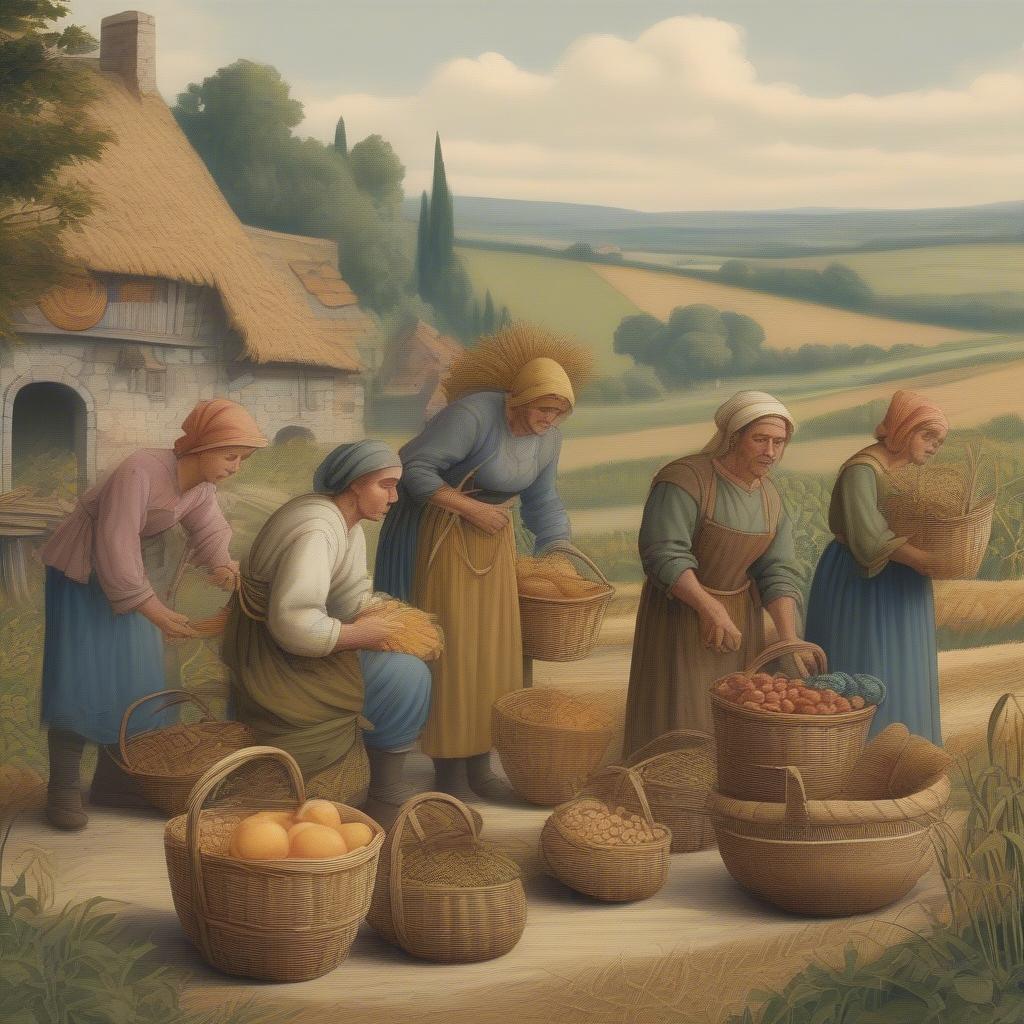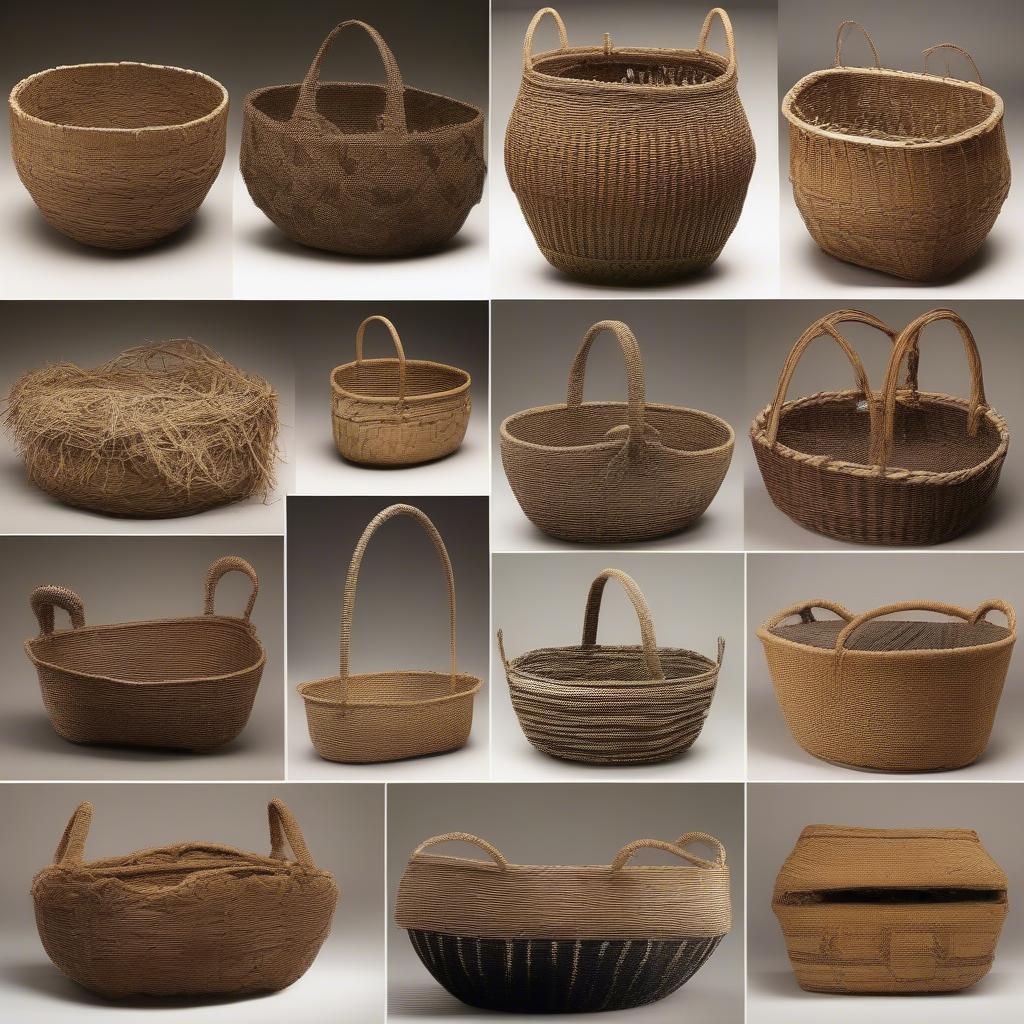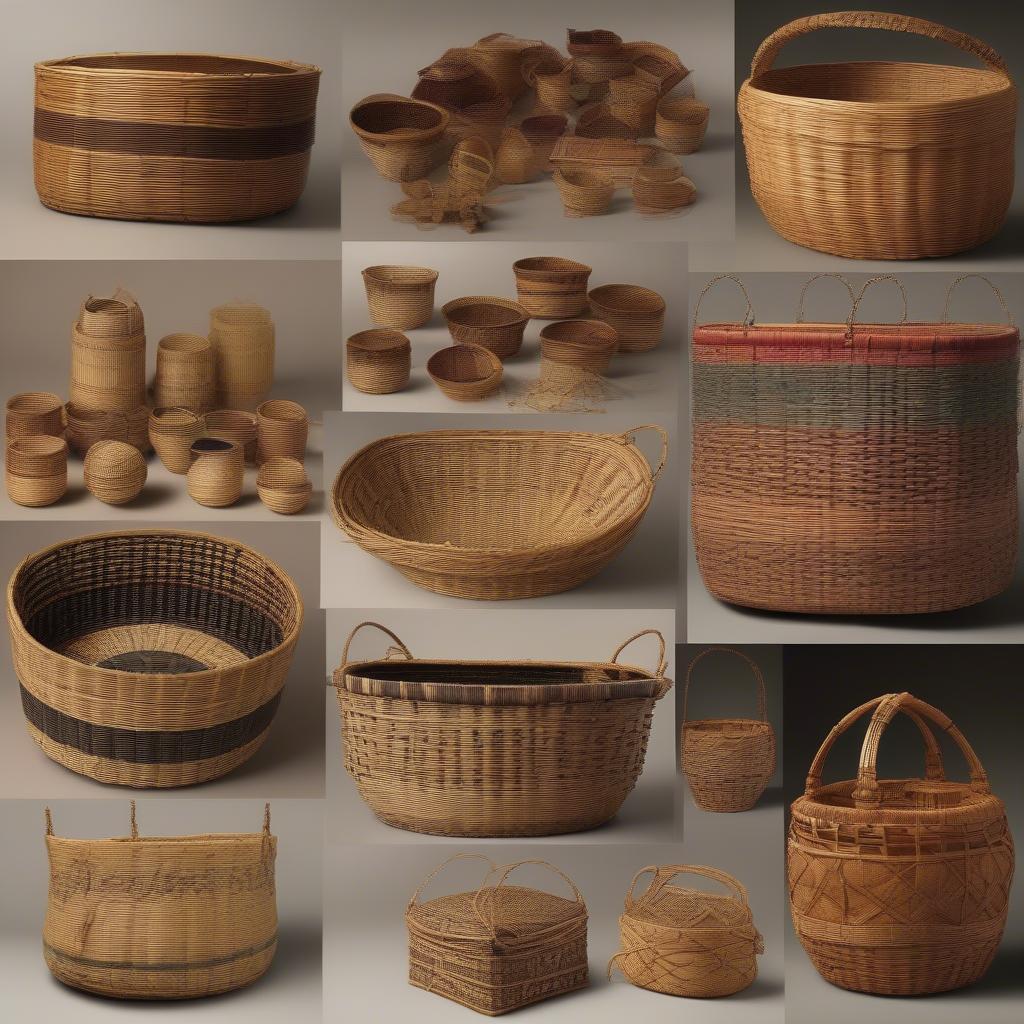Basket Weaving
Basket Weaving in the Middle Ages
Basket Weaving In The Middle Ages played a crucial role in daily life, providing essential storage and transportation solutions. From humble peasant homes to bustling marketplaces, woven baskets were ubiquitous, showcasing both practicality and artistry. These weren’t just simple containers; they were integral to agriculture, trade, and even religious practices. basket weaving dyed reed techniques were also explored, adding a touch of artistry to everyday items.
The Importance of Basket Weaving in Medieval Society
Wicker and other readily available natural materials were skillfully woven into baskets of varying shapes and sizes. These baskets were essential for harvesting crops, carrying goods to market, storing food, and transporting household items. Their versatility made them indispensable in a time when alternative storage solutions were limited.  Medieval Basket Weaving in Agriculture
Medieval Basket Weaving in Agriculture
Everyday Uses of Baskets
Beyond agricultural applications, basket weaving in the Middle Ages extended to everyday life. Smaller, finely woven baskets were used as containers for personal belongings, sewing supplies, and even children’s toys. Larger baskets served as laundry hampers, firewood carriers, and storage for household goods. thimbles for basket weaving might have been used in some more delicate basketry.
Materials and Techniques
Medieval basket weavers primarily used locally sourced materials like willow, hazel, reeds, and rushes. The flexibility and strength of these materials made them ideal for creating durable and functional baskets. Different weaving techniques were employed, including twining, plaiting, and coiling, each resulting in a distinct basket style and texture.
Regional Variations in Basketry
Basket weaving styles and materials varied regionally, reflecting local traditions and available resources. In coastal regions, seaweed and seagrass were incorporated into basketry. Forest regions offered access to a variety of wood and bark materials. These regional variations contributed to the rich diversity of basketry in the Middle Ages.  Regional Variations in Medieval Baskets
Regional Variations in Medieval Baskets
Basket Weaving as a Trade
Basket making was a skilled craft, and basket makers held a respected position in medieval society. While many people wove baskets for their own needs, professional basket makers specialized in creating high-quality baskets for trade and sale. These artisans often passed down their knowledge and skills through apprenticeships, ensuring the continuation of the craft. other terms for basket weaving in midieval times might have included “wickerwork” or simply “basket making.”
The Role of Guilds
In some areas, basket makers formed guilds to protect their interests and regulate the quality of their work. These guilds established standards for materials, techniques, and pricing, ensuring fair competition and maintaining the reputation of the craft.
“Basket making was more than just a craft; it was a vital part of the medieval economy. Guilds played a crucial role in maintaining the high standards of the craft and ensuring the livelihood of basket makers,” says historian Eleanor Ainsworth.
Basket Weaving Beyond the Practical
While practicality was paramount, basket weaving in the Middle Ages also incorporated elements of artistry. Decorative patterns, intricate weaves, and dyed reeds added a touch of beauty to these everyday objects. Baskets were sometimes used in religious ceremonies, further highlighting their importance in medieval culture. where did basket weaving originate is a question that takes us far beyond the Middle Ages.
Symbolism and Decoration
Certain weaving patterns held symbolic meanings, representing good luck, prosperity, or protection. The use of dyed reeds allowed for the creation of colorful and intricate designs, transforming functional baskets into decorative works of art.  Decorative Medieval Baskets
Decorative Medieval Baskets
“The incorporation of symbolism and decoration in basket weaving showcases the artistic sensibilities of medieval craftspeople. These weren’t just utilitarian objects; they were expressions of creativity and cultural beliefs,” explains Dr. Thomas Weaver, an expert in medieval crafts.
Conclusion
Basket weaving in the Middle Ages was a vital and multifaceted craft, essential to the daily lives of people from all social classes. From practical applications in agriculture and trade to artistic expressions of cultural beliefs, basketry played a significant role in shaping medieval society. other terms for basket weaving in medieval times reflect the evolution of language and understanding of this craft. The legacy of this ancient craft continues to inspire contemporary basket weavers and provides a valuable glimpse into the rich history of handmade objects.
When you need support, please contact us at Hanoi, Vietnam or Tech Avenue, Suite 12, San Francisco, CA 94105, USA. We have a 24/7 customer service team.
